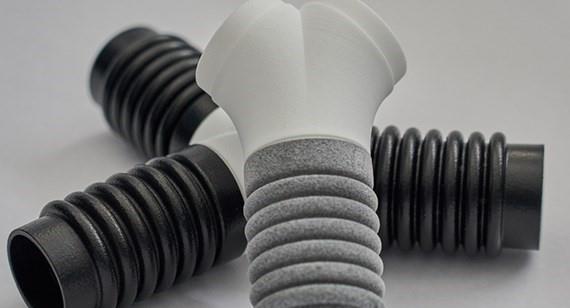Secondary Services in a Race to Come First
Manufacturing products is rarely easy, but when it comes to creating parts for space, it gets even more complex. Not only is there the pressure that comes with big budgets, but the products face the stresses of gravity, pressure and vibration, temperature spikes, and impacts from debris and meteors, so they need to be of the highest quality to perform. When working in the Space industry, post-processing options are often the difference between a good idea and a successful project. Whilst most of your focus will be on primary production methods, secondary services can greatly impact your final project.
Vapour Smoothing
3D printing provides a whole host of benefits for those manufacturing parts for space. It is quick and cost-effective and offers great design freedom, but also allows manufacturers to print entire parts in one go instead of printing individual components, which require further assembly to create the final product. Whilst this is a considerable advantage, 3D printing creates parts by layering material on top of one another, resulting in a lesser quality surface finish than CNC machining or injection moulding. A smooth surface finish can reduce the risk of corrosion, minimise the build-up of dust and other contaminants, and improve the overall aerodynamic properties of the product.
If parts aren't finished correctly, there is a risk of outgassing (the release of gas that was absorbed into the material during manufacture). When the part is subjected to the vacuum of space, outgassing can harm the performance of the equipment, including the spacecraft's optical systems. Choosing a supplier who can offer a secondary service to improve the surface finish is vital. SLS vapour smoothing provides all the advantages of 3D printed parts with the smooth finish you get from injection moulding. Vapour smoothing involves transferring components to a smoothing chamber to be heated. A solvent is added and using controlled evaporation, the vapour from this agent spreads across all of the parts surfaces, creating a controlled chemical melt. This process reduces the peaks and troughs on the surface by liquifying and redistributing material evenly in a carefully controlled atmosphere. Once finished, the equipment evacuates the finishing agent to a collection vat so there is no residue on the parts.
Consistent Quality
The importance of quality when making parts for space cannot be understated, but how can you be sure that a production partner can offer consistent quality throughout the supply chain? Measurement, inspection and quality documentation are usually good indicators.

Measurement, inspection, and quality documentation are essential for space parts because they ensure that they meet the necessary specifications and requirements for safe and successful operation in the harsh and unforgiving space environment. You must be confident that your parts have the correct dimensions and tolerances and are free from defects or non-conformities. Having quality documentation to back that up is vital. By documenting the results, you can track the manufacturing, inspection, and testing processes and outcomes, providing a record of the part's history and ensuring traceability in case of issues. This level of traceability is crucial for ensuring the quality and reliability of the parts and creates an auditable trail to follow when conducting investigations in the event of defects or failures. Quality documentation allows for a continuous improvement mindset, identifying any issues that may arise during production, such as contamination or deviations from specifications, which can be solved to prevent future problems. Additionally, traceability allows you to track performance over time, which can help identify any trends or patterns that may indicate potential issues or areas for improvement.